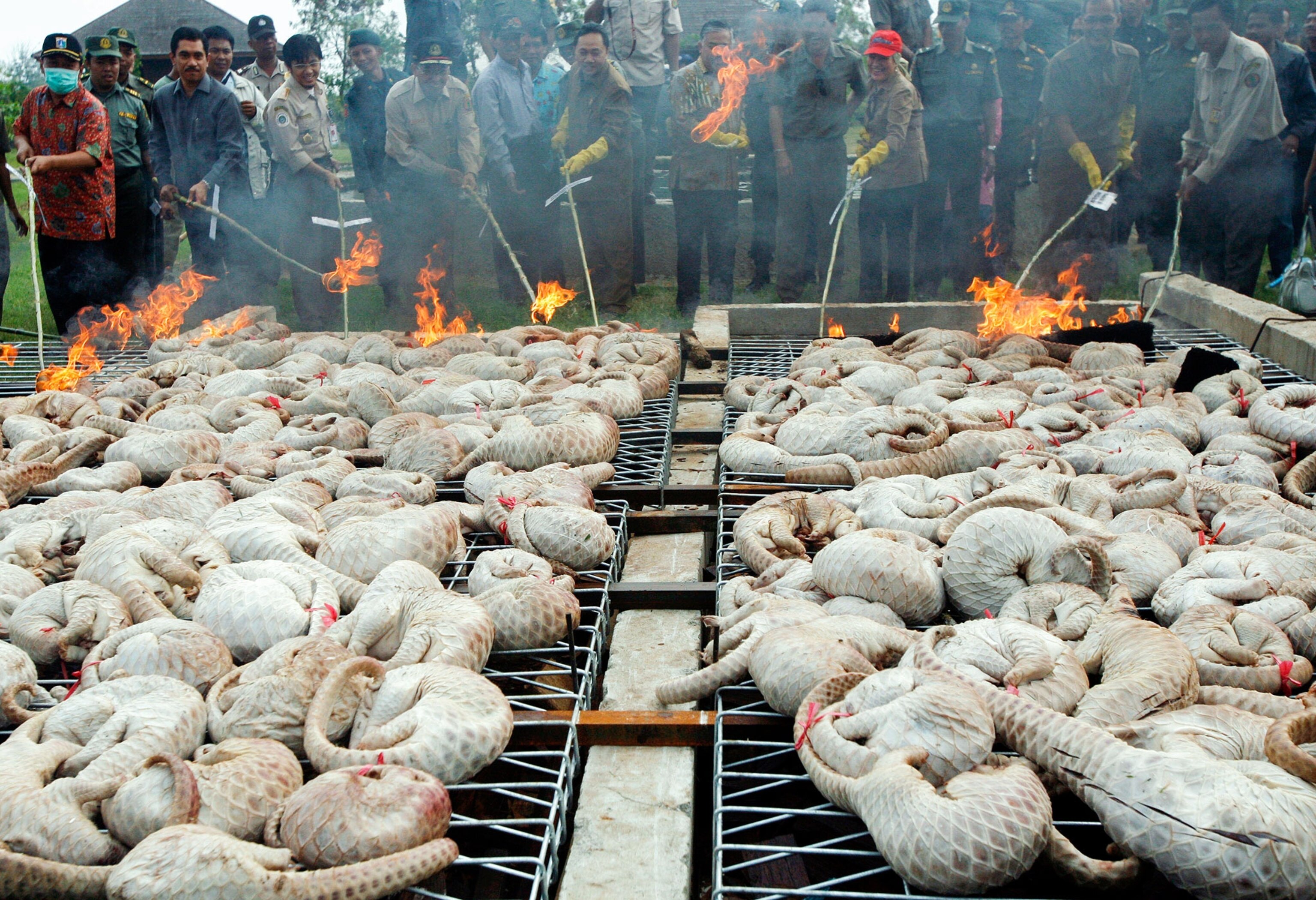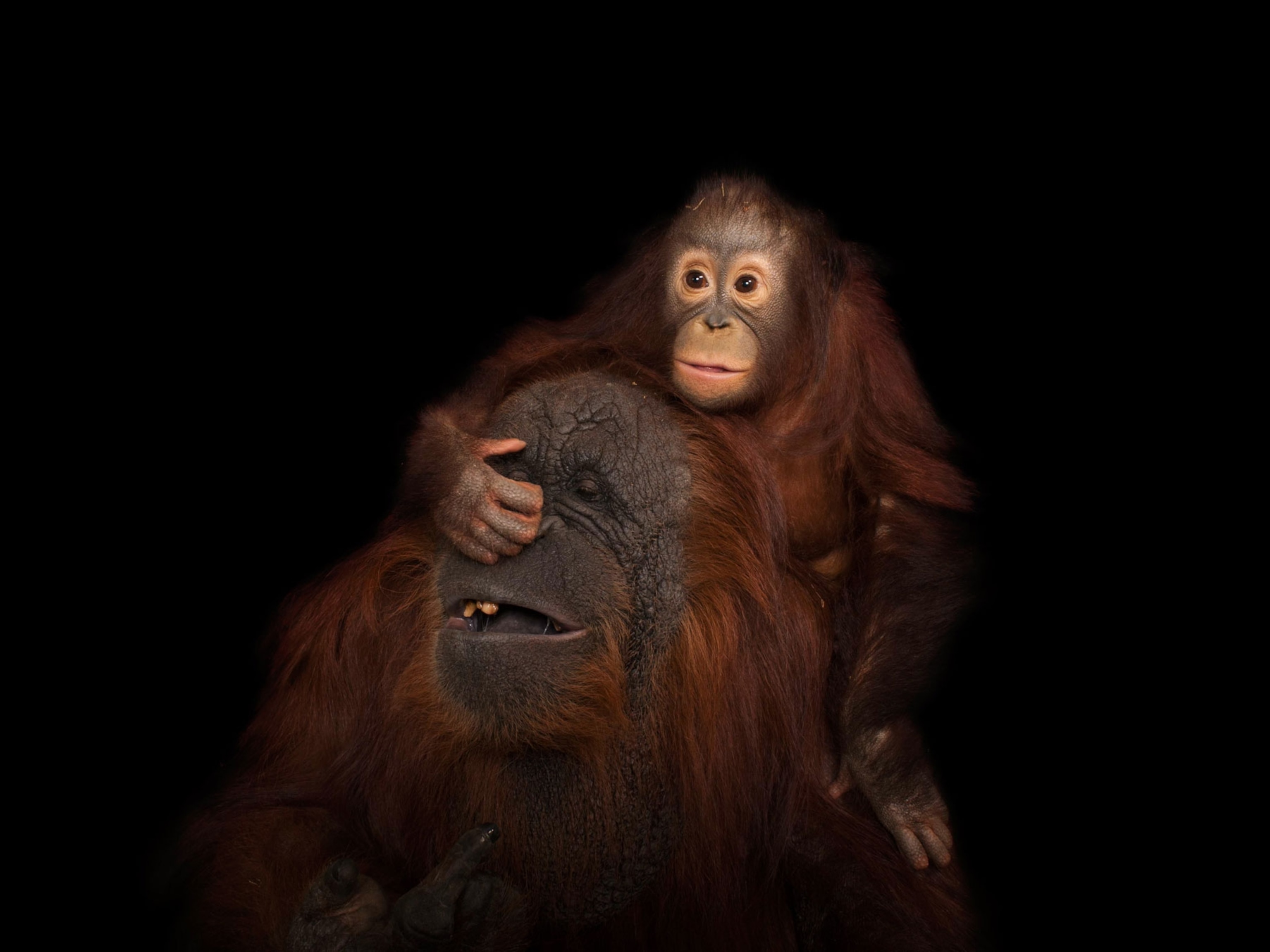
What’s next for the world’s most trafficked mammal?
Pangolins are in trouble—but now they’re a step closer to gaining more protections in the U.S.
Earlier this week, a U.S. agency announced that it will consider giving greater protection to pangolins.
What’s a pangolin, you might ask?
Pangolins are creatures found in Asia and Africa that have a pinecone-esque appearance. They’re about the size of house cats, are covered in scales, and have very long tongues for slurping up ants and termites.
These pest controllers are a hot commodity on the black market, poached for nearly all their body parts. Their meat is considered a delicacy in Asia. Their scales, made of keratin (the main ingredient in fingernails), are fashioned into jewelry or used as traditional medicine, even though they don't have any curative value. Even their blood, a supposed aphrodisiac, is dried and used in potions.
Considered the most trafficked mammals in the world, tens of thousands of pangolins are believed to be poached annually—bad news for an animal whose females reproduce only once a year.
That’s why in July 2015, conservation groups such as the International Fund for Animal Welfare and the Center for Biological Diversity petitioned the U.S. Fish and Wildlife Service to list seven pangolin species under the Endangered Species Act, a law that seeks to conserve endangered or threatened species throughout their range (an eighth species, the Temminck’s ground pangolin, found in southern and eastern Africa, is already protected under the act).
And on March 15, the agency said the organizations made a good enough case that it’s now willing to invite the public to weigh in on the proposal for 60 days.

No one knows exactly how many pangolins remain in the wild, but researchers are pretty sure the animals’ numbers are shrinking. Two of the four Asian species, the Sunda and the Chinese pangolins, are considered to face a high risk of extinction and the other two are “endangered,” according to the International Union for the Conservation of Nature, which sets the conservation status of wildlife.
With the depletion of the Asian pangolins, smugglers have targeted their cousins in Africa, which are faring better but are nonetheless described as “vulnerable.”
U.S. Involvement
If the seven species gain protection under the U.S. law, it would be illegal for people to import the animals or their parts into the country—unless they’re being brought in to promote conservation. Same thing for sales across state lines.
Even though an international treaty prohibits trade in the Asian species and restricts it in the four African ones, there’s still a thriving illegal and legal trade. “Open trade still occurs in these species, even the Asian ones,” said Jeff Flocken, IFAW’s North America regional director. (Read how seized pangolins in Vietnam are released back into the wild here.)
Although the biggest demand for pangolin products comes from China, Thailand, and Vietnam, there’s also trade to markets in the U.S. “With a species as imperiled as pangolins, we need to do whatever we can to shut down that market,” Flocken said.
Nearly 30,000 imports of pangolin products to the U.S. were confiscated by authorities between 2005 and 2014, according to the petitioners, who crunched data from the U.S. Fish and Wildlife Service. And because INTERPOL says that seized contraband amounts to only 10 percent of what’s actually being smuggled across borders, the number of live pangolins or their parts slipping into the country is a lot more than trade statistics can show.
A 2015 report by the Humane Society International revealed instances of U.S.-based companies selling pangolin products, including herbs and pills, online.
Along with choking off this market, the activists also think the listings would send a strong signal to other countries to clamp down on the pangolin trade. “Having an endangered listing tells the world the U.S. is very serious about this,” said Sarah Uhlemann, international program director at the Center for Biological Diversity, a nonprofit environmental conservation organization.
In addition to filing a petition asserting that pangolins deserve protected status in their own right, the crew also filed a “similarity of appearance” petition. In that document, they argued that the seven species should be listed because it’s too difficult for law enforcement to distinguish between their parts and those of the protected Temminck’s ground pangolin. The U.S. Fish and Wildlife Service will review both petitions together and has until mid-July to make its decision.
In the meantime, Uhlemann is worried. “There’s the potential that pangolins could go extinct before people even know what they are,” she said.





